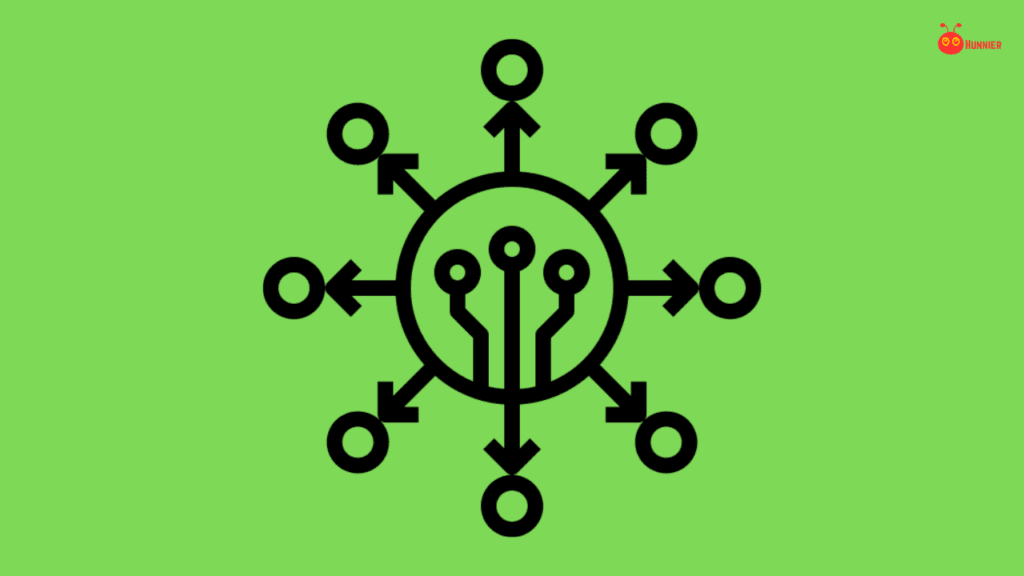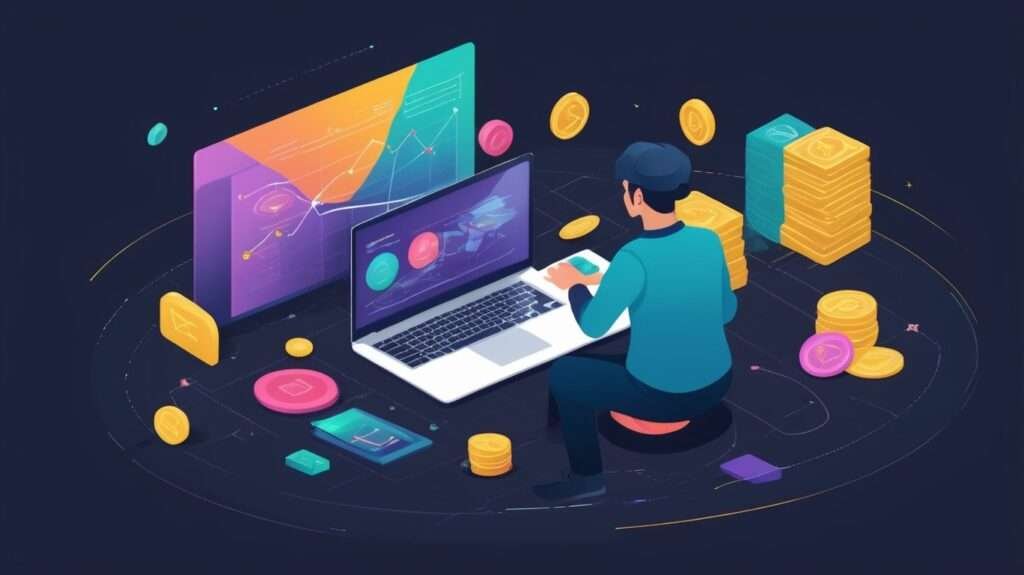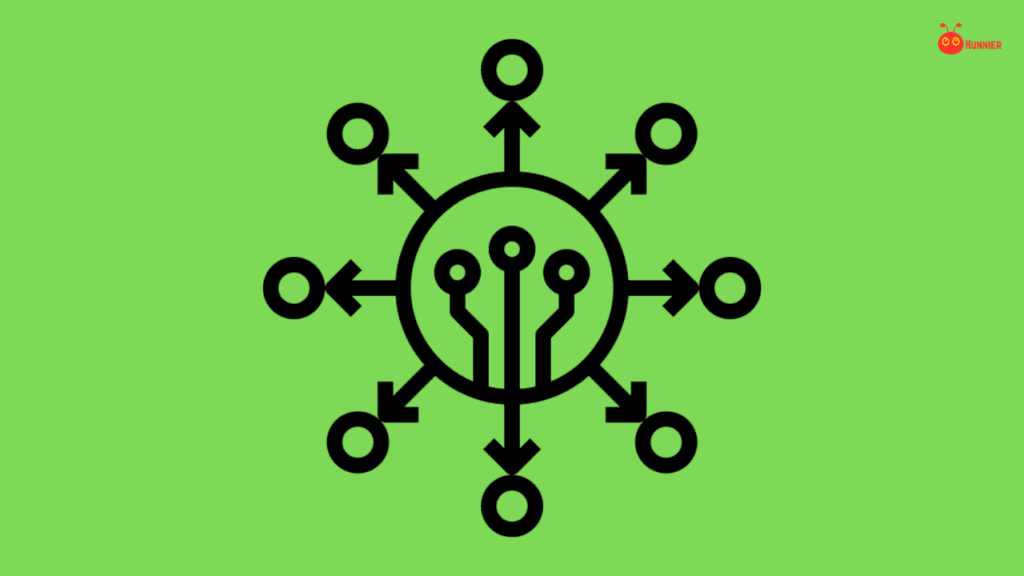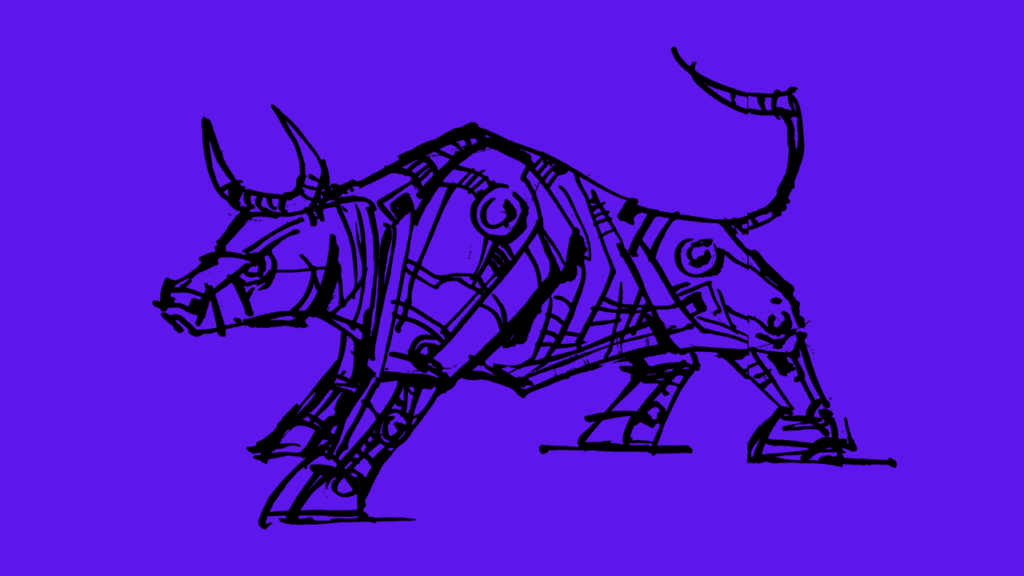Decentralized Finance (DeFi)
DeFi, or decentralized finance, is a rapidly growing sector that’s reshaping how people engage with money. By utilizing blockchain technology, DeFi aims to build a transparent, permissionless, and decentralized alternative to traditional financial systems. Let’s explore the key aspects of DeFi and how it’s changing the financial landscape.
What Makes DeFi Different?
In contrast to centralized banking, where intermediaries like banks and brokers dominate, DeFi operates without a central authority. Everything is managed on the blockchain through smart contracts. This setup eliminates the need for third parties, making transactions faster, cheaper, and more secure.
But why is DeFi getting so much attention? Let’s break it down:
- Permissionless Access: Anybody with an internet connection can access DeFi platforms. Traditional banking requires identification and certain permissions, which limit accessibility, especially for people in underbanked regions.
- Transparency: DeFi platforms are open-source, meaning anyone can audit and verify the system. All transaction histories are publicly available on the blockchain, enhancing trust.
- Control and Ownership: Users have full control of their funds, as there is no reliance on banks or third parties. This autonomy is one of DeFi’s standout features.
For example, a decentralized lending platform allows you to borrow funds by locking up your crypto assets as collateral without having to go through banks or credit checks.

Key Features of DeFi
DeFi has evolved into a complex ecosystem of financial tools. Here are a few of the most significant ones:
- Decentralized Exchanges (DEXs): These platforms allow for peer-to-peer crypto trading without intermediaries. Notable examples include Uniswap and Sushiswap. Traditional exchanges like Binance and Coinbase are centralized, holding your funds, while DEXs give you control. Explore more about decentralized exchanges:
What is a DEX and how it works. - Lending and Borrowing: Platforms like Aave and Compound allow users to lend out their assets and earn interest or borrow assets by locking collateral. The best part? No banks involved. Learn more about crypto lending on Aave:
How Aave’s lending works. - Stablecoins: Cryptocurrencies pegged to traditional assets like the USD to avoid volatility. Tether (USDT) and USD Coin (USDC) are prime examples. Stablecoins are essential for DeFi as they provide a stable medium of exchange. Check the importance of stablecoins:
Stablecoins in DeFi. - Yield Farming: This involves locking up funds in DeFi protocols to earn more crypto. It’s risky but has seen huge returns for early adopters. Learn more about yield farming risks and rewards:
Yield Farming explained. At Hunnier.com, we explain how to engage with crypto markets effectively.
How DeFi Works
DeFi functions through smart contracts on platforms like Ethereum, Binance Smart Chain, and others. Smart contracts are self-executing agreements written in code. Once certain conditions are met, these contracts automatically process transactions, making them secure and trustless. You don’t have to rely on any central authority; the code handles everything.
Most DeFi platforms run on the Ethereum blockchain, which makes them compatible with various applications. Users can swap tokens, lend, borrow, and even take part in complex financial instruments like options or derivatives, all with a few clicks.
The beauty of DeFi is the efficiency. Transactions happen 24/7 without needing a bank to process them. However, it’s not without its challenges.

Risks in DeFi
While the freedom and control that DeFi provides are groundbreaking, they come with significant risks. One of the most critical issues is security. Because DeFi is open and permissionless, it’s vulnerable to hacks, bugs in smart contracts, and manipulation. Users must do their research before engaging with any protocol.
Additionally, there’s the risk of liquidity shortages. DeFi platforms rely on liquidity from users. If liquidity drops, it can create slippage in trades or even make platforms unusable.
Another major concern is regulation. Governments around the world are still trying to understand and regulate DeFi. Without clear guidelines, there’s an ongoing debate about how decentralized these platforms should be and what legal protections users have.
How Does DeFi Affect the Future of Finance?
DeFi has the potential to reshape the entire financial industry. Here are a few areas where its impact could be felt most:
- Global Accessibility: People in unbanked regions can access financial services through DeFi, bridging the gap between the rich and the poor.
- Lower Costs: By removing intermediaries, transaction costs are slashed, making banking more affordable.
- Innovation: DeFi has opened the door for a wave of innovation in fintech. From programmable money to tokenized assets, the future is bright for decentralized applications (dApps).
Discover the future of decentralized finance on our platform: Hunnier – Learn and Master DeFi.
Long-Term Outlook
Looking ahead, DeFi is positioned to grow, particularly as traditional financial institutions start adopting blockchain technology. With continued growth in decentralized exchanges, lending platforms, and the development of new financial tools, DeFi is likely to become a significant part of the global financial infrastructure.
However, it’s essential to watch out for the scalability of networks, as congestion and high fees can pose limitations. Layer 2 solutions like Optimism and Arbitrum are addressing this problem, enabling faster and cheaper transactions.
Explore more on DeFi scalability solutions.

DeFi vs. Traditional Finance
Here’s a quick comparison of DeFi and traditional finance:
| Feature | DeFi | Traditional Finance |
|---|---|---|
| Control | Users control funds | Banks control funds |
| Access | Permissionless | Permission required |
| Security | Code-based security | Centralized regulations |
| Availability | 24/7 | Limited to banking hours |
| Innovation | Rapid development in dApps | Slow innovation due to regulation |
This comparison shows the stark differences between these systems. DeFi offers a more flexible, transparent, and user-controlled financial system.
DeFi is on the brink of revolutionizing how we think about and use financial services. While it has its risks, the opportunities it presents are unparalleled. As platforms mature and regulation becomes clearer, DeFi could well become the future of finance.
To continue learning about the world of cryptocurrency and decentralized finance, visit Hunnier’s educational section, where you’ll find easy-to-understand content tailored for beginners and experts alike.
Read more:












